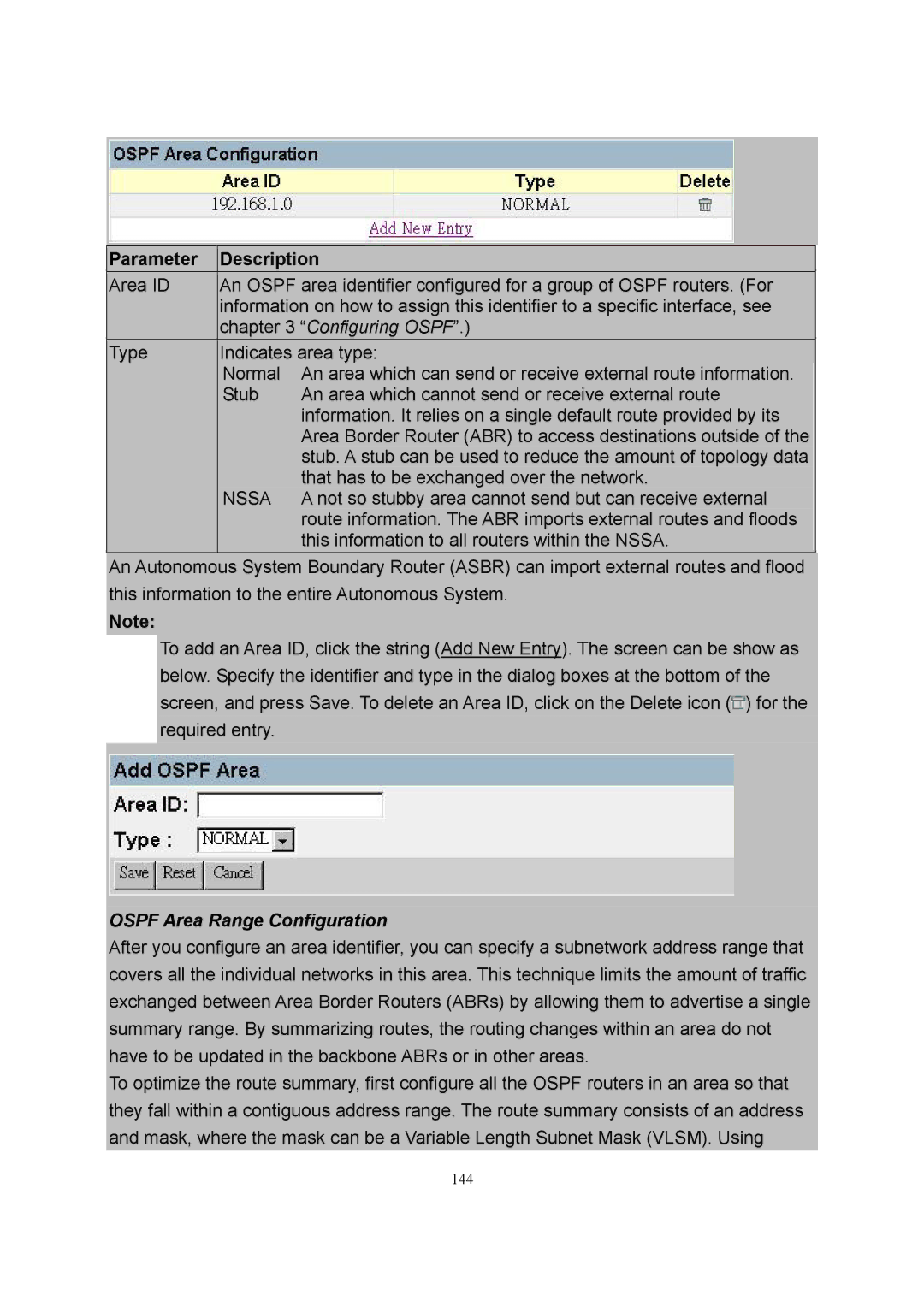
|
|
|
Parameter | Description | |
Area ID | An OSPF area identifier configured for a group of OSPF routers. (For | |
| information on how to assign this identifier to a specific interface, see | |
| chapter 3 “Configuring OSPF”.) | |
Type | Indicates area type: | |
| Normal | An area which can send or receive external route information. |
| Stub | An area which cannot send or receive external route |
|
| information. It relies on a single default route provided by its |
|
| Area Border Router (ABR) to access destinations outside of the |
|
| stub. A stub can be used to reduce the amount of topology data |
|
| that has to be exchanged over the network. |
| NSSA | A not so stubby area cannot send but can receive external |
|
| route information. The ABR imports external routes and floods |
|
| this information to all routers within the NSSA. |
|
|
|
An Autonomous System Boundary Router (ASBR) can import external routes and flood this information to the entire Autonomous System.
Note:
To add an Area ID, click the string (Add New Entry). The screen can be show as below. Specify the identifier and type in the dialog boxes at the bottom of the screen, and press Save. To delete an Area ID, click on the Delete icon (![]() ) for the required entry.
) for the required entry.
OSPF Area Range Configuration
After you configure an area identifier, you can specify a subnetwork address range that covers all the individual networks in this area. This technique limits the amount of traffic exchanged between Area Border Routers (ABRs) by allowing them to advertise a single summary range. By summarizing routes, the routing changes within an area do not have to be updated in the backbone ABRs or in other areas.
To optimize the route summary, first configure all the OSPF routers in an area so that they fall within a contiguous address range. The route summary consists of an address and mask, where the mask can be a Variable Length Subnet Mask (VLSM). Using
144
